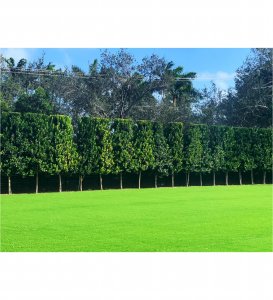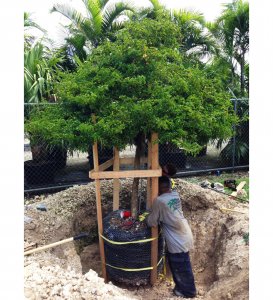Pruning practices for trees and shrubs are basically identical, especially if you are dealing with a tree or trees you wish to maintain as a shrub or hedge by pruning. Most trees and shrubs, evergreen or deciduous plants, require occasional pruning; in order to control height, width, to thin branching or to remove dead, or rogue branches that may blemish overall appearance. Mainly because large overhanging branches pose as threats and potential danger to buildings or people.
Pruning its also a method to stimulate flowering and fruiting and it promotes vigorous growth. Also, mature trees seldom require pruning.
How to Prune Trees ? Gardening Guide
A home gardener may be dealing with a previous garden, or one that is being in its initial stages of landscape or renovation. Moreover, in a previous garden, pruning maintenance will be lead upon the trees or shrubs already present and their respective growth habits. And, unless the homeowner wishes to replace certain plants, a regular pruning regime can be set. But, if initial landscaping is taking place, or a renewal; the homeowner has the opportunity to choose new species of trees and shrubs to plant. And perhaps select trees or shrubs which require greater or lesser amounts of pruning.
In pruning practices, for example, hedge, espalier and topiary growth require the most pruning work. To maintain a uniform surface on the top and sides of hedges, they need regular pruning, and the frequency varying with the plant and season. Also, specific shaping of shrubs or trees to form espalier growth against a flat surface, such as a wall or fence; require shaping the branches and supporting them with wires and nails.
Also, creating topiary plants from trees or shrubs demands a lot of pruning to mold the plant into the shape; often fancifully resembling animals. For intricate figures, pruning may require the building of a wire cage to place over the tree, in order to train the branches; acting as a pattern of growth. And once the achievement of the basic shape or effect, of either espalier and topiary its over, maintenance pruning of shoots and leaves its important.
Pruning Bonsai Trees
Although, everyone should keep in mind that bonsai trees represent the ultimate art of pruning; which are regular trees kept to a height of a foot or less. Bonsai are grown in pots by careful shoot cutting and training, defoliation, root pruning, watering and special plant foods. Also, wires and clamps are often employ to achieve the brilliant effect. This Japanese art form has bring about plants that will live for hundreds of years; and are inherit down as family treasures from one generation to another.
The Proper Timing for Pruning
The timing of pruning should thought through upon the flowering, fruiting and growth habit of the plant. As pruning for most trees or shrubs is a practice that can be done at any time of the year; although it is better to prune certain trees on a regular annual cycle.
Pruning should be done by hand using shears or a saw. Wound dressing is seems unnecessary. And as some trees are prone to bleeding, pruning should be in mid-summer or late fall. The general rule of pruning is to allow a tree or shrub to develop its natural shape. Hedge maintenance generally requires multiple prunings in a year, using mechanical, electric or gasoline power-clippers.Finally, the best of all pruning practices is to know the tree or shrub you are working with; taking into account its special requirements as applicable. The more than 200 tree and shrub descriptions on the TreeWorld website provide basic information about growth and shape to aid in successful pruning.
Contact us for more information!
Read also our article about: Low maintenance hedging plants!





Post a comment